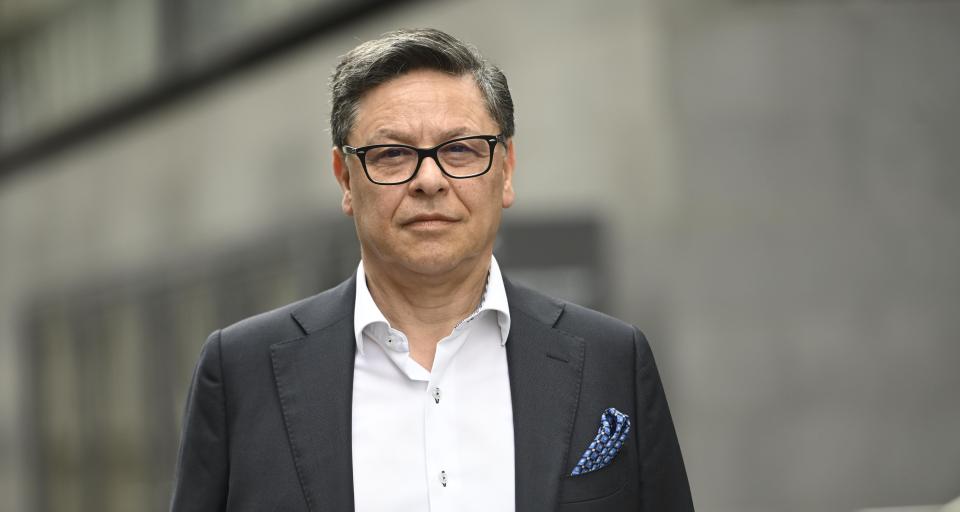Vietnam: between fascination and diversification
Vietnam presents itself as a fast-growing hub in Asia: a young demographic, rising wages and rapid productivity growth, massive direct investment, and the relocation of global supply chains are fueling industry, domestic consumption, and a modernizing capital market infrastructure. Mario Timpanaro explains how AQUIS Capital translates these structural growth drivers into focused investments with on-site research and a consistently active approach.
Vietnam is noticeably moving into the spotlight: The economy is growing strongly, international corporations are expanding their production there – and with the new stock exchange system (KRX) in operation since May 5, 2025, the market appears more modern and fluid than before. At the same time, index providers like FTSE and MSCI are taking a closer look, which promises additional tailwind. In this context, we speak with Mario Timpanaro of AQUIS Capital about opportunities, valuations, and the next growth drivers.
AQUIS Capital, an independent asset management firm based in Zurich, has been relying for years on close market access to Ho Chi Minh City, combining hard fundamentals with disciplined entry and exit management, and investing in Vietnam's key themes such as industrialization, urbanization, domestic consumption, and the financial sector. The in-house Lumen Vietnam Fund is structured as a UCITS and has demonstrated impressive performance since its launch. In short: an active approach with clear local expertise for a country that is currently taking the next leap in development.
Mr. Timpanaro, many professionals know the story broadly. From the perspective of an active equity manager, why is Vietnam relevant right now—exclusively from an economic and market structure perspective?
Mario Timpanaro:
Southeast Asia is currently the fastest-growing region in the world. Vietnam stands out in particular:GDP growth reached 7.6% in the first half of 2025.The shift of global supply chains out of China is in full swing – the pandemic has accelerated this process, and Donald Trump's two terms in office have further fueled it.
Almost all major multinational companies now have a production facility in Vietnam or have concrete plans to relocate capacity there. This is also reflected in foreign direct investment, which reached a new all-time high in the first eight months of this year.
For equity investors, the valuation level (P/E ratio) remains attractive because fundamentals and market technicals are moving in the same direction.
On the macro side, solid growth forecasts suggest that earnings in the banking sector, consumer goods and real estate can continue to rise.
At the same time, market infrastructure has made quantum leaps in recent years. The new KRX trading system has been in operation since May 5, 2025, with noticeable effects on settlement, efficiency, and market scalability. For active managers, this combination measurably improves investability—not just as a narrative, but as visible in higher liquidity, greater turnover, and more reliable processes.
The new trading system has a capacity of USD 5 billion in trading volume per day; current daily turnover is around USD 1.5 billion. This development is crucial for the planned upgrade by MSCI, which is expected to generate significant capital inflows.
In short,the combination of macroeconomic growth and microstructural improvement creates an exceptionally favorable environment for active investors.
If you sort the next few years by drivers: Where do you think the next wave of earnings will come from?
Mario Timpanaro:
We see two independent but complementary revenue streams—precisely what makes Vietnam so exciting at the moment. They run along two lines:
From outside to inside:
The ongoingrelocation of global supply chainsis attracting more and more technology and industrial sectors to Vietnam. The country is rapidly moving up the value chain and developing into a preferred location for products with a higher level of vertical integration. This increases the share of local productivity, further enhancing the attractiveness of the location and making a significant contribution to GDP growth.
From inside to outside:
Agrowing middle classsupports domestic consumption – it already accounts foraround 55% of GDP, one of the highest levels in Southeast Asia. At the same time, digitalization is gaining momentum in the private sector: For example, purchase orders on the stock exchange can now be conveniently placed via smartphone. The government has recognized digitalization as an important source of efficiency and plans to consistently expand this process to the administrative level. The planned reduction of the number of provinces from 63 to 34 is a significant step in this regard and a clear signal of the direction of travel.
Many people talk about an “upgrade” – what is realistic when looking at index providers?
Mario Timpanaro:
It's important to distinguish between the FTSE and MSCI. FTSE Russell has had Vietnam on its watchlist for a move from frontier to emerging markets since 2018. We expect the announcement in October and implementation no earlier than the first quarter of next year, 2026, and no later than September 2026.
MSCI is known to remain methodologically stricter – its primary concern is the equal treatment of foreign investors and domestic investors. The government must pave the way here, for example, by introducing so-called "non-voting shares" or similar systems. We expect this to be readyin the next two to three years. Therefore, it was all the more important to have already successfully introduced the new trading system on the stock exchange.
What distinguishes AQUIS from other Asian managers in its access to this market? What does your investment process look like?
Mario Timpanaro:
Our independence and consistency in the investment process. We rely on our highly qualifiedteam of analysts based in Ho Chi Minh Cityfor fundamental analysis . It's amix of fundamental and chart analysis, which we use to ensure the perfect timing for entering and exiting positions in the Lumen Vietnam Fund.
We were also the first to introduce sustainability into the investment process (2013), thus complying with Article 8 of the EU regulation. Furthermore, we were one of the first fund managers to receive the UCITS label, which represents another milestone for us.
These two criteria make it all the more challenging, yet also profitable, to structure a portfolio over the long term. Ourpriority is always to strike the right balance between risk and reward, which we have achieved extremely well in recent years.

In times of high volatility, it is a MUST to actively manage the portfolio; this is the only way to generate significant added value for our investors.
What themes or sectors do you invest in?
Mario Timpanaro:
Since we don't have a benchmark, our portfolio allocation differs from the index. Our investment themes are, in brief, industrialization, urbanization, domestic consumption, and the financial sector.
Specifically, we are involved in the following sectors according to the following criteria:
We invest in retail banks and insurance companies that benefit from thegrowing lending and pension market. In the industrial and infrastructure sector, our focus is onenergy, transportation, logistics, and construction—the cornerstones of industrial expansion in Vietnam.
The megatrend of urbanization is reflected in investments inaffordable housing, shopping centers, and service sectors, which are directly supported by rising middle-class incomes.
Another focus is on industrial parks, which benefit greatly from foreign direct investment and are a key component of the global supply chain shift to Vietnam. In the technology sector, we focus on companies that increase efficiency and productivity – for example, in the areas of digitalization, automation, and financial technology.

What do you think is the major driver of the economy in Vietnam?
Mario Timpanaro:
Here, I would like to highlight the strong performance of the government in Hanoi. The government's budget is very healthy, and thedebt-to-GDP ratio is only 35%.
This gives the government sufficient flexibility to invest in the country's reforms. This benefits not only the population, but also the economy and the rapidly growing tourism sector, which currently accounts forabout 8-9 percent of gross domestic product.
The Vietnamese government's growth target of 8-10 percent by 2030 is certainly very ambitious, but certainly achievable.
Furthermore, the government has successfully concluded new and significant trade agreements with numerous countries in recent years through its so-called "Bamboo Strategy." At the same time, we are experiencing a revival of domestic consumption, which is providing additional momentum for the economy.
Finally: your condensed pitch to (professional) investors?
Mario Timpanaro:
Vietnam offers an excellent opportunity, especially for investors seeking new investment opportunities for diversification reasons – as confirmed, for example, by the correlation with the Euro Stoxx, which is just 0.28%.
Furthermore, the valuations in the Lumen Vietnam Fund for 2026 are also moderate at a factor of around 11.8 times with an EPS of around 17%.
The fund offers daily liquidity and can be subscribed for in various currency tranches. The euro tranche is hedged against the US dollar with a three-month swap. Since its launch in 2012, the actively managed fund has generated anaverage return of 10.26% (USD retail tranche as of September 30, 2025). We are confident that we can continue to build on this success.





